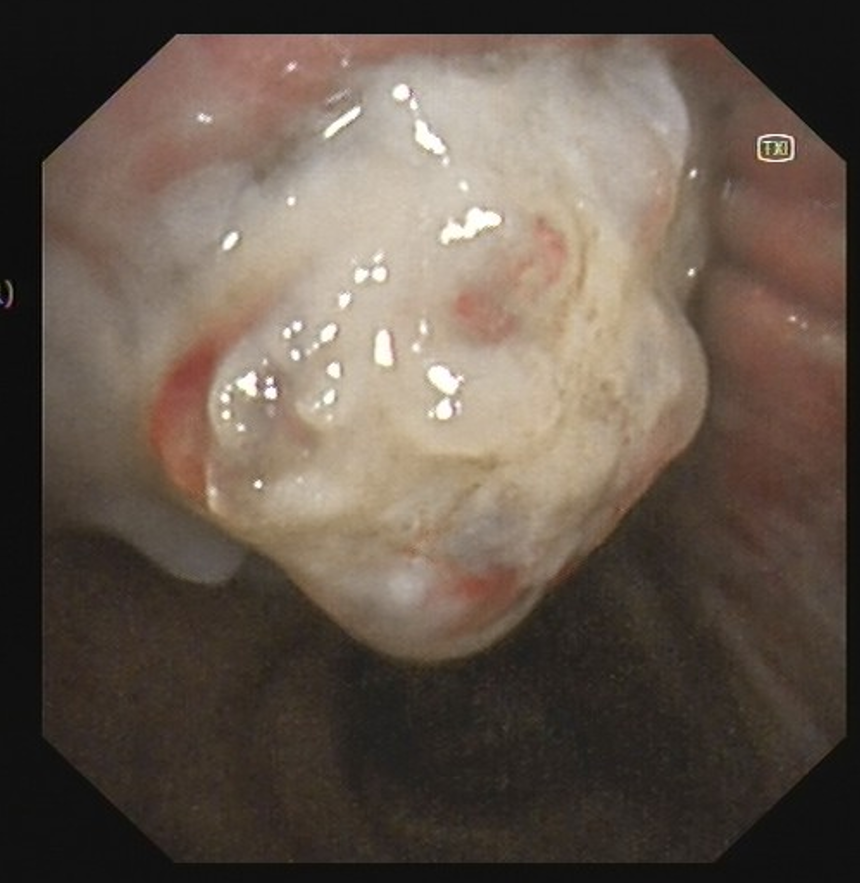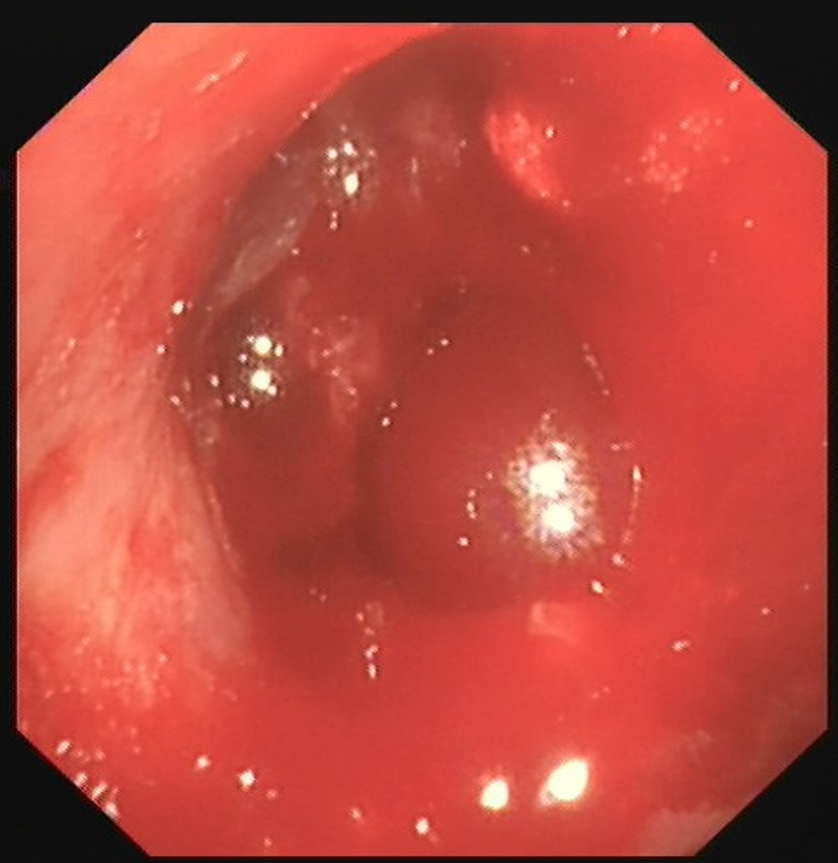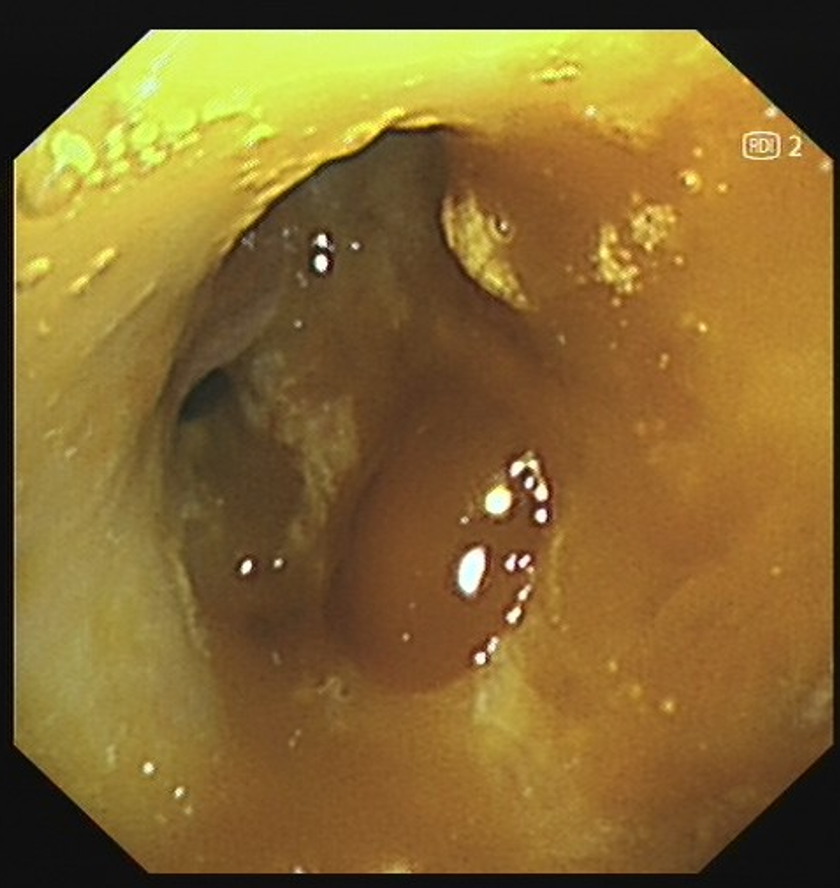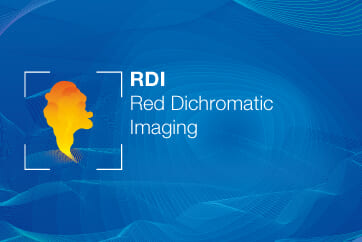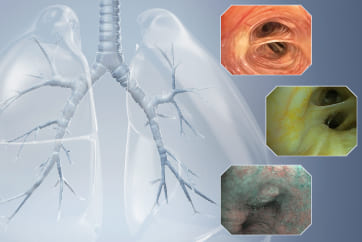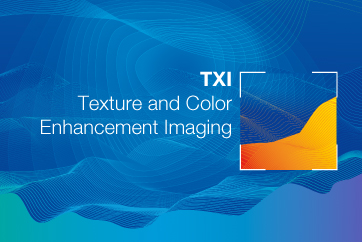Case: Neoplasm in the right upper lobe bronchu

Professor Wang Guangfa, Guidance Expert
Chairman of the Department of Respiratory Diseases & Department of Respiratory and Critical Care Medicine,
Peking University First Hospital
Scope: BF-1TQ290
Case: Right upper lobe bronchus
Patient information: 74 years old, Male
Medical history: The patient developed cough with some white sputum for 2 weeks, without fever, hemoptysis, chest pain and other symptoms. Bronchoscopy showed “neoplasm in the right upper bronchus” and biopsy showed “bronchial mucosa and necrotic tissue”. Antibiotics and mucolytics were given. The patient had smoked 2 packs a day for 40 years and had quit smoking for 2 years.
1. In WLI, the neoplasm in the right upper bronchus blocked the lumen completely. A tumor protruded into right main bronchus from its orifice.
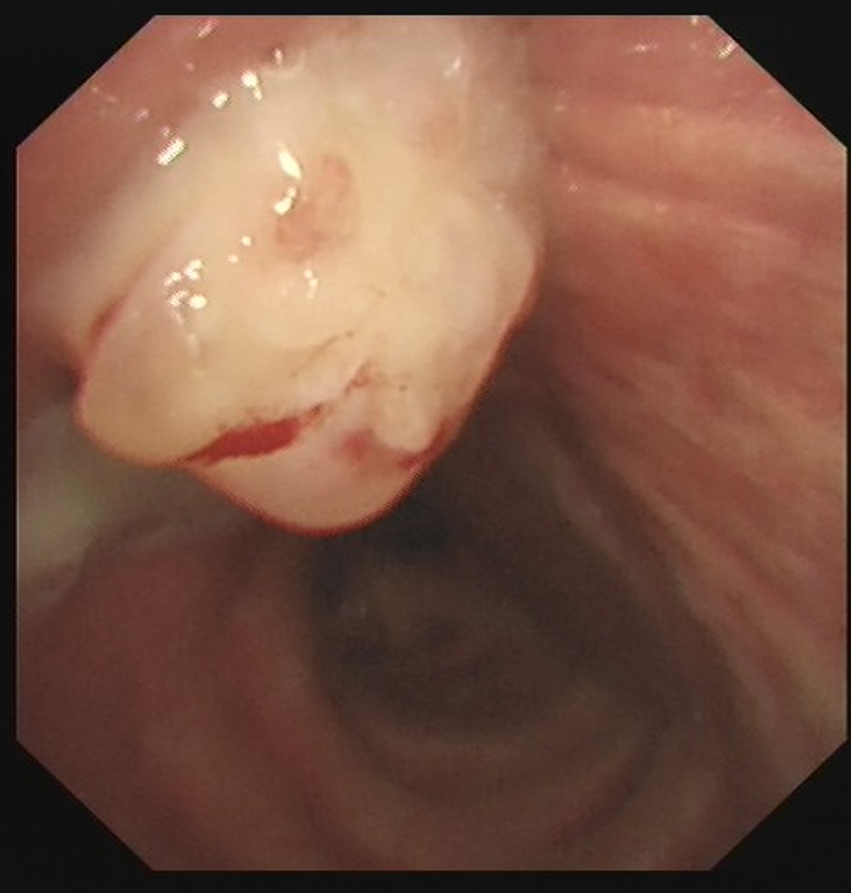
The surface detainls of the neoplasm was not clearly displayed in WLI mode. Thus it was impossible to differentiate necrotic tissue from submucosal blood vessels.
3. In RDI mode 2, submucosal blood vessels of the neoplasm were not observed
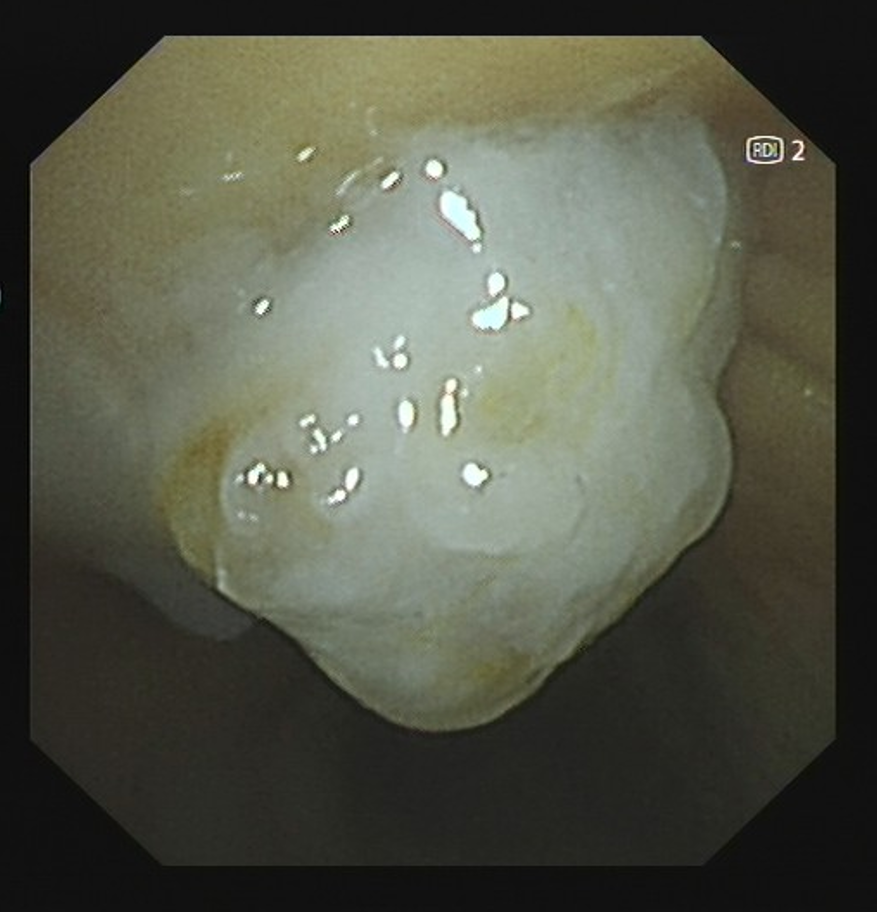
The RDI mode 2 can be used to observe deep blood vessels more clearly and assist in identifying whether there is any blood vessel at the biopsy site. Thereby the operator can avoid do biopsies at the site with rich blood vessels and reduce the risk of bleeding.
Overall comment
The TXI (new optical function) and RDI technology of the bronchoscope help distinguish the fine structure of the bronchial mucosa, improve the visibility of bleeding points, help stop bleeding quickly, and improve the efficiency and safety of endoscopic diagnosis and treatment.
Co-operator:
Professor Wang Xi, Operation Expert
Associate Chief Physician, Department of Respiratory and Critical Care Medicine,
Peking University First Hospital
- Content Type

